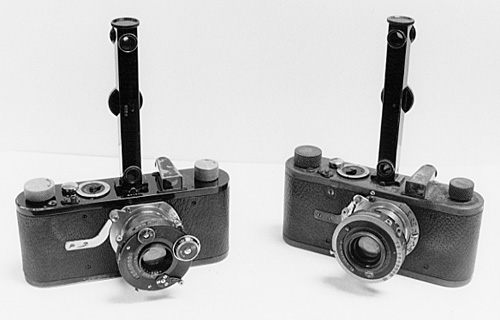kb244
Well-known
Have here an odd-duck of a "Leica" branded screwmount camera. But theres some discreperencies.
- I can't find this model anywhere in the book or the McKeown's camera guide
- The top while it looks like a rangefinder but has no guts, its merely a cover with a viewfinder window, nothing more.
- Even though the top looks like it has a rangefinder, there is absolutely no way that it could be as I mentioned above, and because on the lens mount theres no rangefinder coupling what-so-ever.
- Theres no shutter curtain nor looks like was ever designed with one (thus why the lens is a leaf shutter style).
- There is no serial number at all on the body.
- Frame counter does work tho it doesnt 'stop' you each frame kind of a click feeling
- It doesn't like a standard 35mm cartridge you can get it in 'most of the way' but not enough to close the bottom. But it will rewind and everything
The bottom plate has "Germany" and "Open" "Close" by the dial. upon taking the bottom off there is the clasic loading instructions in german, english, french and spanish (I've only known them to have either only german, or english and german).
There is a copper clip to apply preasure to the metal preasure plate. On top of the camera it says Leica in the classic scripture, and then Ernst Leitz Wetzlar D.R.P. under it like most did.
The lens is collapsible and has a rangefinder coupling. Lens around center says 50mm Bausch & Lomb-Zeiss Tessar Series 1c Pat Feb 24 1903 1894921 and appears to have a compound shutter with the serial 1536520, three shutter modes M, B, T, shutter speeds from 1 to 300, and aperture range from 3.5 to 16.
It's really quite an odd duck.








- I can't find this model anywhere in the book or the McKeown's camera guide
- The top while it looks like a rangefinder but has no guts, its merely a cover with a viewfinder window, nothing more.
- Even though the top looks like it has a rangefinder, there is absolutely no way that it could be as I mentioned above, and because on the lens mount theres no rangefinder coupling what-so-ever.
- Theres no shutter curtain nor looks like was ever designed with one (thus why the lens is a leaf shutter style).
- There is no serial number at all on the body.
- Frame counter does work tho it doesnt 'stop' you each frame kind of a click feeling
- It doesn't like a standard 35mm cartridge you can get it in 'most of the way' but not enough to close the bottom. But it will rewind and everything
The bottom plate has "Germany" and "Open" "Close" by the dial. upon taking the bottom off there is the clasic loading instructions in german, english, french and spanish (I've only known them to have either only german, or english and german).
There is a copper clip to apply preasure to the metal preasure plate. On top of the camera it says Leica in the classic scripture, and then Ernst Leitz Wetzlar D.R.P. under it like most did.
The lens is collapsible and has a rangefinder coupling. Lens around center says 50mm Bausch & Lomb-Zeiss Tessar Series 1c Pat Feb 24 1903 1894921 and appears to have a compound shutter with the serial 1536520, three shutter modes M, B, T, shutter speeds from 1 to 300, and aperture range from 3.5 to 16.
It's really quite an odd duck.










